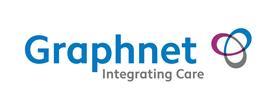Nigel Foster on the need to not just restore services and reduce backlogs but to tackle potential inequalities in access, experience and outcomes

The new national figures on waiting lists are unprecedented, with over 4.7 million people waiting and some 400,000 waiting more than a year. Unfortunately this is part of a wider story. As the latest NHS operational guidance makes clear, the task ahead extends beyond restoring services and reducing backlogs to identifying unmet need and meeting new care demands while at the same time understanding and then tackling potential inequalities in access, experience and outcomes.
Sponsored by
These are clearly uncharted waters and it goes without saying that in order to meet this level of need, we have no choice but to change the way that we work as care systems.
At Frimley Health and Care Integrated Care System, we are using a shared care record overlaid with population health management tools to help us find the best way forward. Combined information from all health and social care settings has brought our waiting lists and the people on them to life, with data such as ethnicity, deprivation, and factors such as frailty, dependency and resource usage. We can interrogate this information, to look at the proportion of people on every waiting list from a black or Asian background, for example, and to segment people into particular groups with a view to targeting interventions.
So, what are we learning from our population health management approach? And is it helping us address these intractable problems?
What are we doing differently?
There is no doubt that we are better able to transfer insights into action and move from reactive to proactive ways of working.
A big area of focus right now is to put in place measures to better support people and optimise their health and wellbeing while they are on a waiting list. Matching patient tracking lists to shared care record information allows us to identify cohorts who may need targeted messaging and support. This can include general public health messages or more specific information aimed at harder-to-reach patients. However, measures can also be much more focused. We are exploring provision of wrap-around care such as health coaches to patients who might have multiple long-term conditions, wider socio-economic challenges, and a history of unscheduled attendances. These measures are designed to ensure they are best prepared for a particular intervention.
Analysing health inequalities and identifying unmet need
From our preliminary analysis, there is an emerging trend that populations from deprived backgrounds are more likely to present later and with more serious presentations.
We are now looking hard to identify access challenges for particular groups of people, analysing health characteristics, how patients have interacted with health and social care services, and wider socio-economic factors.
Interventions underway include engaging with particular places or groups of patients in different ways. For example, our vaccination data has shown us the need to work more closely with the local Nepali community to improve access to health services. We are also providing primary care with lists of hard-to-reach multi-generational households so they can provide them the opportunity to get vaccinated together – addressing vaccine hesitancy – and then leverage the contact to offer health checks and additional advice.
Decision support for providers
In Frimley ICS we can link data to highlight patients with learning difficulties and serious mental illness on our waiting lists. The conversation now is looking at how we can better support and manage these patients. We are also flagging and giving to providers lists of patients who are on multiple lists, where a referral for one particular procedure could potentially have an unintended impact on length of recovery or stay.
We are already using our population health tools to manage selected patients remotely, identifying the people to enrol on virtual pulse oximetry wards and monitoring them at home with information feeding back into the clinical records. Early findings for hospitalised patients over the first 13 weeks of the initiative have shown a reduction in mortality of 42 per cent for shielded patients and 50 per cent for non-shielded patients.
There are clear lessons to be drawn here for other groups of patients - those with long covid, perhaps, or those identified as moderately frail. The potential is significant – with benefits for maximising capacity, increasing clinical safety and improving patient experience.
To read more, click here
Frimley Health and Care ICS is a founder member of the Combined Intelligence for Population Health Action (CIPHA) programme which develops and shares use cases across ICSs.



























